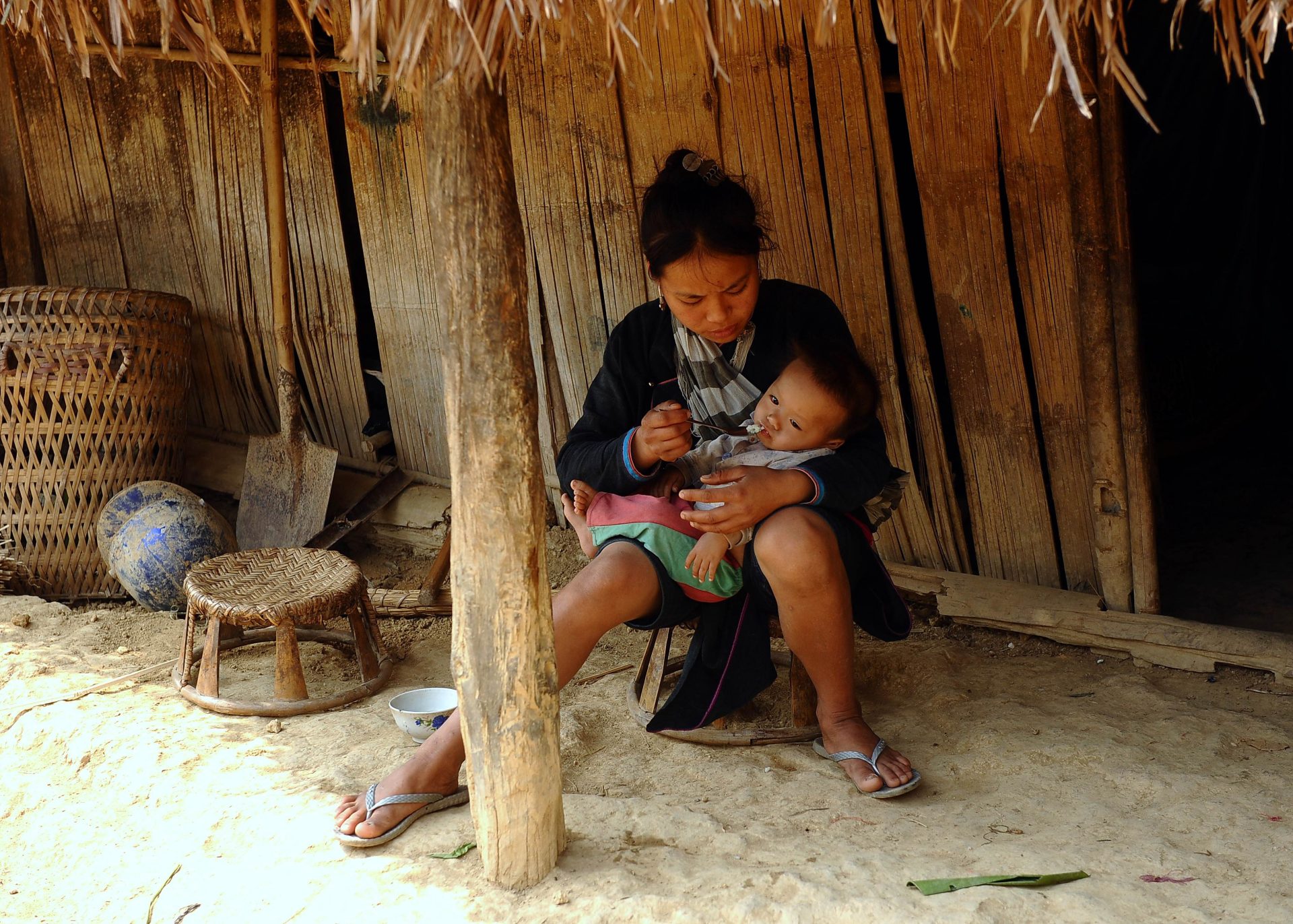Pregnancy-related deaths of women and infant mortality still plague some impoverished, rural provinces of Laos, mainly due to a lack of nutrition and access to health care, despite declines in these figures for the entire country, according to Lao health officials and a United Nations agency.
The rate of women who die while giving birth and newborns is pervasive among ethnic citizens who live in rural areas where medical care is scarce, especially in Sekong, Borikhamxay and Luang Prabang provinces, they said.
The country had an infant mortality rate of 35 deaths per 1,000 live births in 2020, a decline from 52 deaths per 1,000 live births reported a decade earlier, according to data from The United Nations Children’s Fund, or UNICEF.
The country’s maternal mortality ratio — the number of maternal deaths per 100,000 live births — stood at 185 as of 2017, the latest year for which data is available from UNICEF. This figure has also seen a steady drop from 360 deaths per 100,000 live births a decade ago, and 544 in 2000.
Poverty is widespread in Laos, and is especially severe for children from the dozens of ethnic minority groups who live in rural areas, where most families depend on agriculture to make a living and lack access to basic services, including health care, sanitation and food, according to Save The Children.
As a result, Laos has one of the highest child mortality rates in Southeast Asia, with one child in 22 dying before their fifth birthday — seven times the child mortality rate in the United States, the NGO says.
In the last nine months, five pregnant women died while giving birth, and there were nine infant deaths per 1,000 births, mostly ethnic minority children, in Lanam district, Sekong Province, said a health official there who declined to be identified so as to speak freely.
Pregnant women in the district continue to work long hours in the fields, making them prone to death when it comes time to give birth, she said. Some of the deaths occurred when the women gave birth alone in their huts next to the family rice fields. Others occurred because the women were malnourished.
“Pregnant women work harder than men every day in the fields without rest, and some work requires carrying heavy loads,” the health official said. “Health care workers advise them not to do it, but they still do. [Yet], we try to ask the families not to let pregnant women work in the fields.”
The infant deaths were due to birth defects, from babies not fully developing in their mothers’ wombs and from premature births, sometimes at seven months into the pregnancy, she said.
“Some were not strong enough when they were born, and they couldn’t drink milk when their mothers breastfed them,” she said.
The high mortality rates for pregnant women and infants mean that Sekong province will not achieve the government’s target of reducing the death rates to zero, said the health official.
In Borikhamxay district of Borikhamxay province, there were about three infant deaths per 1,000 newborns and one death of a pregnant woman while giving birth in the past nine months, said a health official from the district.
“The infant deaths were due to premature births, and the woman died after giving birth at a hospital because she worked too hard in the fields while pregnant,” the official said.
In Phonthong district of Luang Prabang province, one ethnic Hmong woman died while giving birth and two infants passed away since the beginning of the year until October, said a district health official.
“This is the first case that a pregnant woman has died while giving birth, and it is very sad that she arrived at the hospital too late,” the official said. “We used to advise them [pregnant women] to come early, but they didn’t do it because they live in remote areas.”
The provincial Health Department’s target is to get the death rate down to zero, but “we are short of the target,” said the official.
About 70 percent of the population in Luang Prabang province comes from ethnic minority groups, many of whom live in remote mountainous areas without access to local health services or trained midwives, according to Save The Children.
Families in these communities are less aware of what pregnant women, newborns and young children need to stay healthy and grow well, says the NGO, which equips remote health centers with essential medical equipment and supports mobile health clinics so they can reach isolated communities.
Save the Children also raises awareness about how pregnant mothers and babies can stay healthy through nutrition, better sanitation and regular health checks.
Copyright © 1998-2020, RFA. Used with the permission of Radio Free Asia, 2025 M St. NW, Suite 300, Washington DC 20036.







